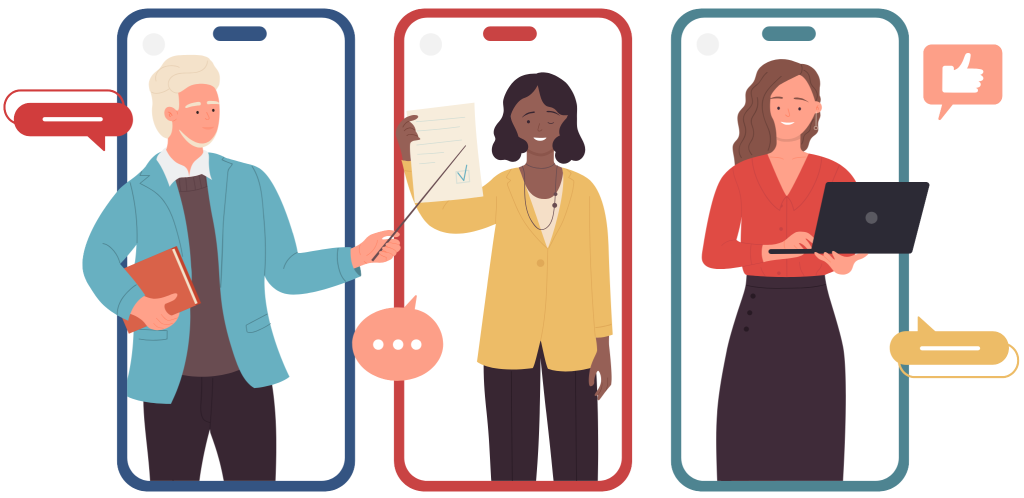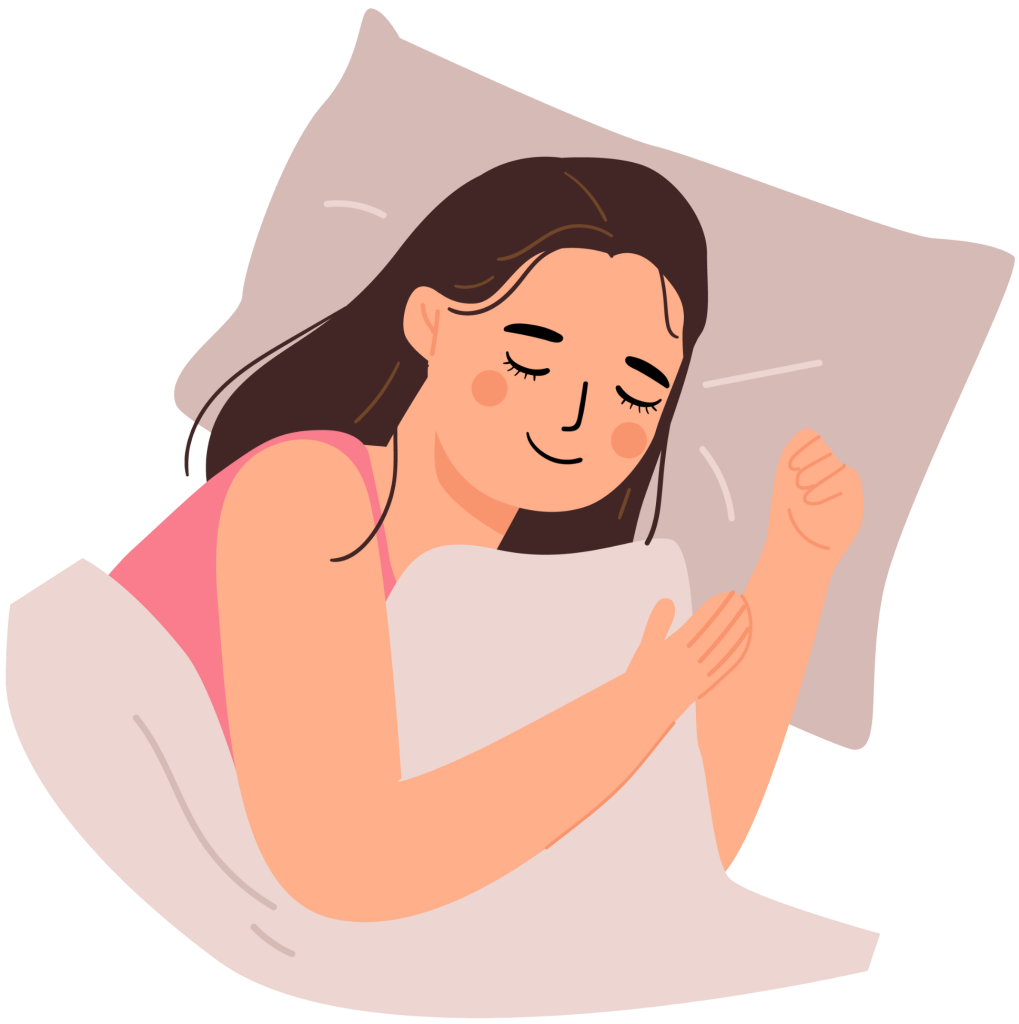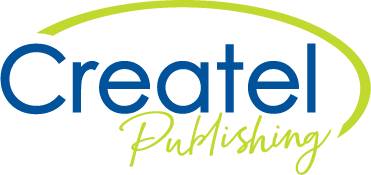Why Teachers Should Go on a Digital Detox These School Holidays and How to Start in Six Simple Steps
As a modern society, I think it is fair to say that we are all guilty of spending just a little too much time on our phones. Scrolling on social media really does seem like a great way to decompress after a long day in the classroom. Plus, that’s where most of us get our news from now days, isn’t it? With school holidays upon us, now is a great time to take a cold, hard look in the front camera and realise that a digital detox could be a simple way to properly rest and prepare for the terms ahead.

I will be the first to admit that I subconsciously reach for my phone and open the Instagram app the instant I have spare time. Sometimes, I don’t even realise what I’m doing until I find myself commenting on a post or messaging a friend and I am forced to focus on what I’m typing.
Each week, I get a notification on my phone with a tally of my screentime. Apparently, I spend four hours a day on my phone, which is strange. It doesn’t feel like I’ve spent four hours on my phone. I mean, I do make time to respond to messages and check my socials during my lunch breaks. I use my phone at the gym to guide me through my workout and then watch TikTok during my two-minute rests between sets. I listen to music when I need to focus or perform tasks. I can’t stand having unread emails in my inbox, so obviously I must stay on top of that. I don’t watch TV to know what’s happening in the world, so I make sure that I check the news on Instagram, which, I think, helps with discernment because I can read or watch the news from various outlets in an instant… wait a minute, I’m starting to see a time-consuming pattern here. On the flip side, I’m really strict about there being no phones allowed at the dinner table. Life is about balance, right?
Considering that all these small, seemingly insignificant actions can add up so quickly, it occurred to me that I need to make some serious changes to my habits to reclaim four hours of my day. As educators, I bet you could use an extra four hours, too.
Stepping away from screens and going on a digital detox can lead to a wealth of benefits, and we’re going to go through them together and then outline exactly how you can start and maintain a digital detox in a realistic and achievable way!
Improved mental health and emotional wellbeing
According to Lifeline, too much screentime can contribute to feelings of stress, anxiety, and overwhelm.[1] Continuous use of technology can also lead to mental and emotional fatigue, making it extremely difficult to disconnect from work and create a healthy work-life balance.
By spending time offline, teachers get a better sense of what they need in their personal lives, allowing them to deliver the best lessons they can when they are in the classroom.
When you are feeling rested and fulfilled in your personal lives, it will become evident in your professional lives. That’s why we want to help you to prioritise your wellbeing outside of work. After all, you can’t pour from an empty cup.

Increased focus and productivity
Taking technology breaks and reducing your online presence can help you to properly recharge after a long day of teaching, marking, planning, and administration. These breaks allow you to return to the classroom feeling energised – contributing to the flow of creativity and productivity. It also eliminates distractions so your attention is solely on the tasks at hand. This means that you can get through your work quicker without the added distraction of notifications (because your students knocking on your office door during lunchtime is distraction enough!)

Reconnection with the present moment
While the innovations of mobile phones and social media were initially created with the intention of increased and easy connectivity, as a teacher, you may often find yourself disconnected from friends and families, as well as the present moment.
By purposely disconnecting from technology, you can engage with your surroundings in more meaningful ways. Reconnection with the present moment also fosters deeper connections, which brings us back to improved mental health and emotional wellbeing.
Rediscovery of offline activities
How often do you get home from work and think ‘I don’t have any time for myself’? Almost every day, right?
Well, this is my main motivation for starting a digital detox and creating new habits that will buy me some time for myself.
Of course, as educators, sometimes you will have to take work home as there are simply not enough hours in the day. We don’t encourage this, but we are realistic in our approach, and we aren’t going to recommend things that are unachievable. We know that this is the reality of teaching now days. What we can do, however, is help you to create good, effective habits and find joy and balance in teaching and in your personal lives.
Disconnecting from technology and social media can help you to rediscover offline activities that will fill your cup. Not only does the disconnect create more time for you to do the said activities, but you can become creative in your approach. This could look like spending your free time outdoors, painting, writing, exercising, gardening, reading, attending social events, and even participating in mindful activities. Whatever you enjoy, do it! Even if your goal is to relax, there are so many ways that you can make sure that you are rested and rejuvenated each day without doomscrolling.

Reassessment of digital habits and overall priorities
Okay, so you’ve decided that you want more time for yourself and are seriously considering a digital detox. Awesome!
To understand what your habits are and to create new habits based on your priorities, you will need to actually start the digital detox.
Now, let’s take a close look at your current habits and your priorities. Taking a break will make your habits blatantly obvious. You might realise that you reach for your phone every time you step out of the classroom, or that you rely on your phone for entertainment during your commute to work or between classes. While these habits aren’t necessarily a bad thing, they may not align with your values or help you achieve your goals. With the clarity that will come from a digital detox, you can make conscious decisions to change your ways and see the effects of your efforts in real time.

Better quality sleep
We’ve all heard the science behind blue light stimulation[2] and how it is negatively impacting our circadian rhythms and ability to sleep. If you wear glasses, you will likely have a blue light filter on the lenses. Now, although there is conflicting research about the impact of blue light[3] on our ability to sleep, what we can’t argue with is how distracting technology can be at bedtime.
It is easy to lose track of time when we’re on social media or watching videos or TV. It is also very easy to get carried away with excitement, intrigue, boredom, or even sadness and shock with the content that we consume, which can lead to an inability to fall asleep even after we have put our devices away for the night.
By allowing our brains to unwind and prepare for sleep in the hours leading up to bedtime, we can increase our chances of improving our sleep quality, leading to increased energy levels, better cognitive function, and a better sense of overall wellbeing.

Digital burnout
Many people experience a sense of digital burnout, but teachers are particularly susceptible to this phenomenon because of the constant use of technology in their professional roles. With the move to digital whiteboards, digital planning and online learning and communication systems, there is a new expectation that teachers must be available and responsive after work hours. Beyond the expectation, teachers are also easily accessible to colleagues, students, and families in a way that they never have been, meaning that setting boundaries is increasingly difficult. Digital planning is also limiting and less effective than classic paper options (we’re not just saying that because we are a diary provider – there’s genuine research to back this up[4]!). By setting clear boundaries and turning back to paper-based activities and planning, you can eliminate the need to be constantly online during your working hours.
Signs that you might need a digital detox[5]
Mental and emotional symptoms
- Feelings of overwhelm and constant pressure to stay connected
- Increased stress and anxiety with an inability to decompress or relax after work
- Difficulty concentrating and increased time spent on simple tasks
Physical symptoms
- Eye strain, dry eyes, or blurred vision
- Frequent headaches or migraines
- Neck and back pain caused by looking down at devices
- Other body aches and pains due to poor ergonomics and a sedentary lifestyle
Behavioral changes
- Insomnia or disrupted sleep
- Irritability
- Social withdrawal or dreading in-person interactions
Professional challenges
- Reduced energy or enthusiasm for teaching
- Decreased motivation to participate in professional development
- Inability to create or maintain a healthy work-life balance
- Decreased efficiency in planning and grading
- Inability to prioritise tasks
- Missed deadlines or incomplete tasks
How to start a digital detox in six simple steps
- Write down your non-negotiable or unavoidable uses of technology so you can understand where you can and cannot cut down from the get-go
- Turn off push notifications so that you can eliminate unnecessary distractions. Another option is to log out of your social media accounts entirely or remove addictive apps from your phone
- Convert to greyscale – Did you know that colour is the main reason why our brains are drawn to our phones? Removing the colour can make your phone less pleasurable and help to reduce your screentime
- Restrict phone use during mealtimes. Studies have shown that having your phone on the table can reduce the quality of your interactions, even if you are not actively using your phone.[6] Other research[7] conducted shows that using your phone or watching television or videos online while eating can lead to increased calorie intake, lower food satisfaction, and obesity.[8]
- Create no-phone zones. For example, your bedroom or your office are great places to start. Leaving your phone in your bag or out of sight while at work can increase productivity and limit digital distractions. Be sure to disconnect your phone from your computer so that you don’t get messages while focusing on work. As for the bedroom, creating a space that is used solely for sleep and relaxation will condition your brain into associating that room with feelings of calmness, stillness, and rejuvenation. Another great idea is to use traditional alarm clocks instead of your phone. Be honest, how many times have you gone to turn your alarm on and accidentally end up on Instagram? Enough said. I use a sunrise alarm clock, and it has been a game changer! Here are some of the benefits. [9]
- Limit screentime. This simple and effective built in tool will help you to control how long you are spending online. Here is how you can limit screentime on an Apple device [10]and here is how you can limit screentime on an Android device[11].
To make this process even simpler, we have created a Digital Detox Reflection Sheet. This will help you to understand where your time is going, what your priorities are, and how to implement this digital detox into your life in a realistic way.
You can download the Digital Detox Reflection Sheet for free here: https://shorturl.at/JQNzH
References:
[1] https://toolkit.lifeline.org.au/articles/techniques/how-to-do-a-digital-detox
[2] https://lens.monash.edu/@medicine-health/2019/11/05/1377503/the-battle-to-keep-our-circadian-rhythms-in-tune
[3] https://www.sbs.com.au/news/article/how-much-sleep-is-your-phones-blue-light-really-costing-you-heres-what-the-science-says/bstmn9rxx
[4] https://createl.cswebsites.com.au/2024/05/15/why-paper-diaries-how-you-can-use-them-to-help-your-students-to-flourish-academically-and-personally/?srsltid=AfmBOor0_WIneRKUn9uwLfPoq5dkk9midM9CgAWhii_TWeIVgZRhjc-d
[5] https://tpd.edu.au/technology-detox-for-teachers/?srsltid=AfmBOorlYeV4nm5X1CCyYB-Cpa6ryrIBGe5BAZHxgA65Qdpg-B1hZhyc
[6] https://journals.sagepub.com/doi/10.1177/0013916514539755
[7] https://www.sciencedirect.com/science/article/abs/pii/S0195666320302919
[8] https://www.bbc.com/future/article/20240730-is-eating-in-front-of-the-tv-really-that-bad-for-you
[9] https://www.calm.com/blog/do-sunrise-alarm-clocks-work
[10] https://support.apple.com/en-au/guide/iphone/iphbfa595995/ios
[11] https://www.howtogeek.com/443322/how-to-set-app-time-limits-and-block-apps-on-android/


Leave a Reply